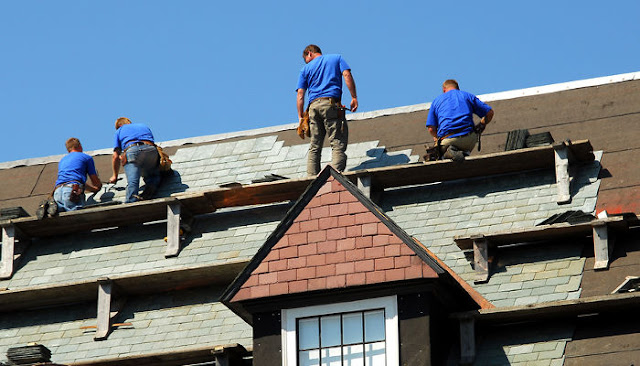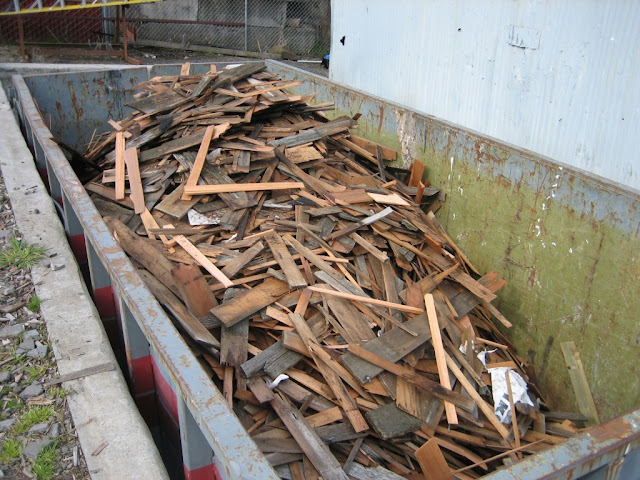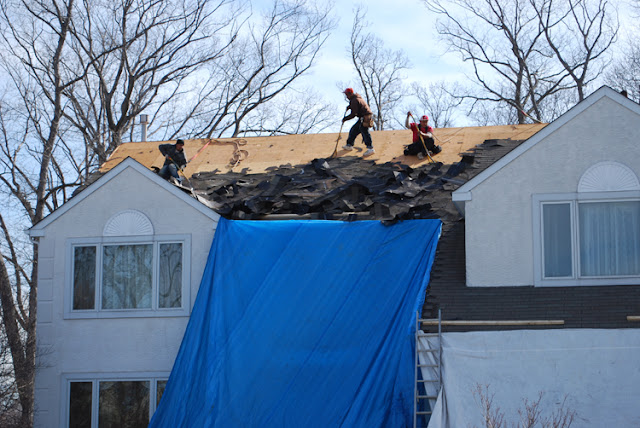Roofing Contractor Livonia MI
Monday, October 29, 2018
Monday, August 6, 2018
Who will be on-site for the installation?
Having the roof of your home removed and replaced with a professionally installed roofing system can be very overwhelming at times. From the search for the perfect contractor to the state of your yard when they finish the install, there are a lot of decisions to make and keep in mind. Throughout the process, you will most likely be working with one main point of contact for the roofing contractor. They will help you make all the best decisions for your home's roof that make sense with your budget. This project manager will know your install inside and out, which is why you want to make sure they will be on-site for the day installation.
They Might Not Be There?
Most roofing contractors try to have a project manager make at least one appearance at every project. This does not guarantee they will make it to your home though before the removal is finished and the install has begun. During that time all kinds of important aspects of your project could be mishandled.Lost in Translation
If the crew installing your roof are not fluent in English, which often happens with manual labor work like roofing, you may find it very difficult to communicate your expectations for the roof. Making sure the project manager is there at the start of the project means you are assured to have someone with whom you can effectively communicate.What's the worst that could happen without a project manager on-site?
More than likely, the project manager handling your roof replacement has communicated all the details to the crew, and everything will be handled expertly and efficiently. However, there are very real chances that big mistakes which can slow down the project can occur. What if the manufacturer sent the wrong color? If you are not home to see the shingles and there is no project manager on-site, you may come home to find a red roof instead of a blue one!Monday, July 23, 2018
Weather Delays and Your Roofing Project Timeline
Roofing contractors are some brave people. Climbing up on top of houses, scaling steep roof pitches, ripping it all off from underneath themselves, carrying heavy stacks of shingles to the top! There is no shortage of risk or possibilities of a lifelong injury, yet they do it with a smile on their face and a pep in their step. Sometimes it is easy to forget that they are just people! However, even they have their limits, and those limits are generally reached once severe weather comes into play.
Things like ice, rain, and even high winds can and will delay a roofing project, what happens to your project timeline if this happens? What precautions will they take to protect your roof if unexpected weather strikes mid tear-off? These are important questions to ask any contractor vying for your roof replacement.
Things like ice, rain, and even high winds can and will delay a roofing project, what happens to your project timeline if this happens? What precautions will they take to protect your roof if unexpected weather strikes mid tear-off? These are important questions to ask any contractor vying for your roof replacement.
Delays Prior to The Project
Most professional roofing contractors spend time each day watching the weather for tomorrow and the coming week. This way they can brace customers for possible delays and rearrange installs as needed. For instance, if the weather is calling for heavy rain or thunderstorms the morning your install is supposed to begin the contractor will be able to notify you of the delay in advanced. Which is great, but just how long will that delay be? If he is a busy contractor with a full schedule, this may mean your install won't be able to be rescheduled for weeks! One trick is to schedule a secondary install date in case the first is delayed.Delay During The Project
Maybe the weatherman has said all week that your install day would have perfect weather, but if you have lived in Michigan long enough you know, you can NEVER trust the weatherman. If the crew has begun install and severe weather hits, obviously the install will need to be halted, but what about the exposed areas of your roof deck? The last thing you want is water damage on your deck because it was exposed to rain for two days straight! Find a contractor that will cover and protect the deck with underlayment while they remove, ensuring that your home will be protected against any surprise weather.Monday, July 9, 2018
Dumpster rentals and magnetic rollers: Cleaning up after roof installation
When your roofing contractor arrives on installation day, they will be bringing plenty of materials with them, but they will also be creating a lot of refuse during removal. While tearing off your old roof, the crew will be stripping everything from the deck. Things like strips of shingles, metal flashing, underlayment, ice-shield, and lots and lots of nails will tumble off your roof and await removal. Who is in charge of this removal? Well, that depends on the contractor.
Site Cleanup During Removal and Installation
Plenty of contractors include site cleanup with their project estimate, ensuring that they will remove any roofing debris from your property before completion. Most professional roofers use two methods to keep your property clean: tarps, magnetic rollers, and dumpsters.Tarps
In the last post, we covered how you should look for a contractor that uses tarps to protect your property during removal. These tarps also help keep the falling materials mostly contained to limited areas. Meaning that it is easier to locate any refuse and move it to the dumpster.Magnetic Rollers
Even with the tarps up during removal, there is still a chance that smaller debris, like nails, will end up hidden in your grass or landscaping. A contractor that is truly dedicated to keeping your property free of potentially harmful materials will use a magnetic roller. Magnetic rollers are exactly what they sound like, a big magnetic drum that is attached to handles allowing workers to go around your property picking up any and all nails.Dumpsters
When all the excess and removed materials are being cleaned up the crew will need someplace to put it all. Generally, you will have a dumpster on site that is big enough to contain all of the materials. You should look for a contractor that handles the rental and removal of this dumpster, saving you money and a headache down the line.What Are Your Plans For Cleanup?
This is an important question to ask any contractor you interview for your roofing project. There are plenty of hidden fees that can pop up after the contract is signed if you do not have the specifics of cleanup and removal outlined in the estimate.Monday, June 25, 2018
What will they do to protect your property?
When the roofing contractor you hired shows up to install your new roof, more likely than not they will be removing the old one first. With the removal of that roof comes a lot of falling shingle, metal, and other materials. None of which is likely to be forgiving to your siding, gutters, or foliage if they make contact. While most liability insurance will cover any damage caused during removal and installation, it is better to avoid the hassle altogether. This is why it is important to inquire about a contractor's plan for protecting your property before signing a contract.
A Little Coverage Goes a Long Way
There are three methods that you can expect a professional contractor to utilize to protect your home and its surroundings.1. Standoff Stabilizers For Gutters, trim, and facia
When the roofing crew is working on your roof, their only means of gaining access to your roof will be ladders. Ladders that lean against your house typically make contact with the gutters, the facia, or the drip edge. Each of these areas can become damaged by the ladder impacting them. When a crew uses Standoff Stabilizers on their ladders, the weight and impact of the ladder are focused on the roof deck.2. Plywood for Windows and Doors
Windows, doors, and their frames are all susceptible to damage from falling debris. Putting up slabs of plywood to cover these sensitive areas provides the best protection you could want for your home.3. Tarps Everywhere!
Once the plywood has been the crew should secure tarps from the eaves of your roof and run them down to the ground, extending out onto your property. These tarps not only protect your home from damage now, but they help to ensure a thorough cleanup after the installation is complete.Make Sure You Will Be Covered!
Talk to all potential roofing contractors about their plan for protecting your home and property. You don't want to look up at your new roof only to find a section of gutters missing!Friday, June 1, 2018
Why you want to know the cost of plywood
As you may know by now, a full inspection of your roof is a must before you accept an estimate from any roofing contractor. This will help to locate any damage to the roof deck that the crew will need to repair. Discovering it before the estimate is written means the repair costs can be included in the negotiations.
Even with a full inspection, it is possible to miss some areas that need repair. Only to discover severe water damage or rot when the project has begun, and the old roof has been removed. This is when most homeowners learn the importance of knowing the cost of plywood.
Even with a full inspection, it is possible to miss some areas that need repair. Only to discover severe water damage or rot when the project has begun, and the old roof has been removed. This is when most homeowners learn the importance of knowing the cost of plywood.
What does the cost of plywood matter?
Most roofing experts will arrive on installation day with a bundle of 1/2 inch plywood in addition to what they know is needed for the roof. That way if they find previously unknown repairs during tear-off they won't have to make a trip to Home Depot or Lowes. Sounds perfect right? That is until you find out they will be billing you nearly triple the cost they paid for that plywood!How to Avoid Getting Burnt
Set the Price At Contract Signing
When negotiating over the price of the estimate, you can be sure that they include the cost. You can usually get a sheet of 1/2 inch from Home Depot for $16. Many roofers will charge upward of $50 per sheet of extra plywood needed.Purchase Your Own
Maybe you have already signed, and you are reading this after the negotiation phase. That doesn't mean you have to accept whatever they offer on installation day! You can easily go out and buy your own 1/2 inch plywood. That way you know what it costs, and you can always find someone willing to take it off your hands if it ends not being used.
Subscribe to:
Posts (Atom)




